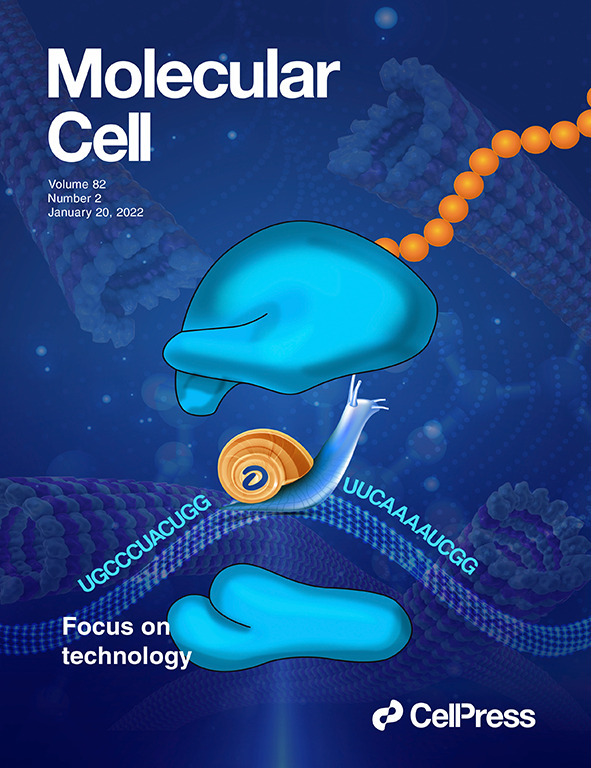Effects of heterozygous SMG1 mutations on nonsense-mediated mRNA decay in human pluripotent stem cell model
IF 6.5
3区 生物学
Q2 BIOCHEMISTRY & MOLECULAR BIOLOGY
引用次数: 0
Abstract
Nonsense-mediated mRNA decay (NMD) eliminates transcripts containing premature termination codons, thereby preventing errors in protein synthesis. Serine/threonine-protein kinase SMG1 is a crucial kinase for NMD response, interacting with other regulatory proteins such as SMG8 and SMG9. We identified a de novo heterozygous variant in SMG1 p.Gln2398Glu (c.7192C>G) in a patient with global developmental delay, facial dysmorphism, and oculomotor apraxia. Thus, stem cell models with SMG1 mutations using gene editing technology were established to address the functional consequences of this mutation. While mutations causing the reduction in SMG1 gene dosage by alterations in splicing (c.7192_7194delinsGAA; GAA/+) or frameshift (c.4331_4337del; KO/+) led to a mild but significant reduction of NMD activity, NMD activity was not altered in cells with the SMG1 GAG/+ mutation. Furthermore, cortical organoids from hPSCGAA/+ exhibited size reduction compared with the control (CTL) or GAG/+, suggesting that reduced NMD activity can affect nervous system development. These findings suggest that hypomorphic SMG1 mutations can cause reduced NMD activity and subsequent biological responses, while the mutation found in the patient alone may not be sufficient to induce pathological symptoms.
杂合SMG1突变对人多能干细胞模型中无义介导的mRNA衰变的影响。
无义介导的mRNA衰变(NMD)消除了含有过早终止密码子(ptc)的转录本,从而防止了蛋白质合成中的错误。丝氨酸/苏氨酸蛋白激酶SMG1是NMD应答的关键激酶,与其他调节蛋白如SMG8和SMG9相互作用。我们在一名患有全面发育迟缓、面部畸形和动眼失用症的患者中发现了SMG1 p.Gln2398Glu (c.7192C>G)的新杂合变异。因此,利用基因编辑技术建立SMG1突变干细胞模型,以解决该突变的功能后果。而突变通过剪接的改变导致SMG1基因剂量的减少(c.7192_7194delinsGAA;GAA/+)或移码(c. 4331_437del;KO/+)导致NMD活性轻度但显著降低,SMG1 GAG/+突变细胞的NMD活性未发生改变。此外,与对照(CTL)或GAG/+相比,来自hPSCGAA/+的皮质类器官显示出体积减小,这表明NMD活性降低可以影响神经系统的发育。这些发现表明,SMG1亚型突变可导致NMD活性降低和随后的生物反应,而仅在患者中发现的突变可能不足以诱导病理症状。
本文章由计算机程序翻译,如有差异,请以英文原文为准。
求助全文
约1分钟内获得全文
求助全文
来源期刊

Molecules and Cells
生物-生化与分子生物学
CiteScore
6.60
自引率
10.50%
发文量
83
审稿时长
2.3 months
期刊介绍:
Molecules and Cells is an international on-line open-access journal devoted to the advancement and dissemination of fundamental knowledge in molecular and cellular biology. It was launched in 1990 and ISO abbreviation is "Mol. Cells". Reports on a broad range of topics of general interest to molecular and cell biologists are published. It is published on the last day of each month by the Korean Society for Molecular and Cellular Biology.
 求助内容:
求助内容: 应助结果提醒方式:
应助结果提醒方式:


